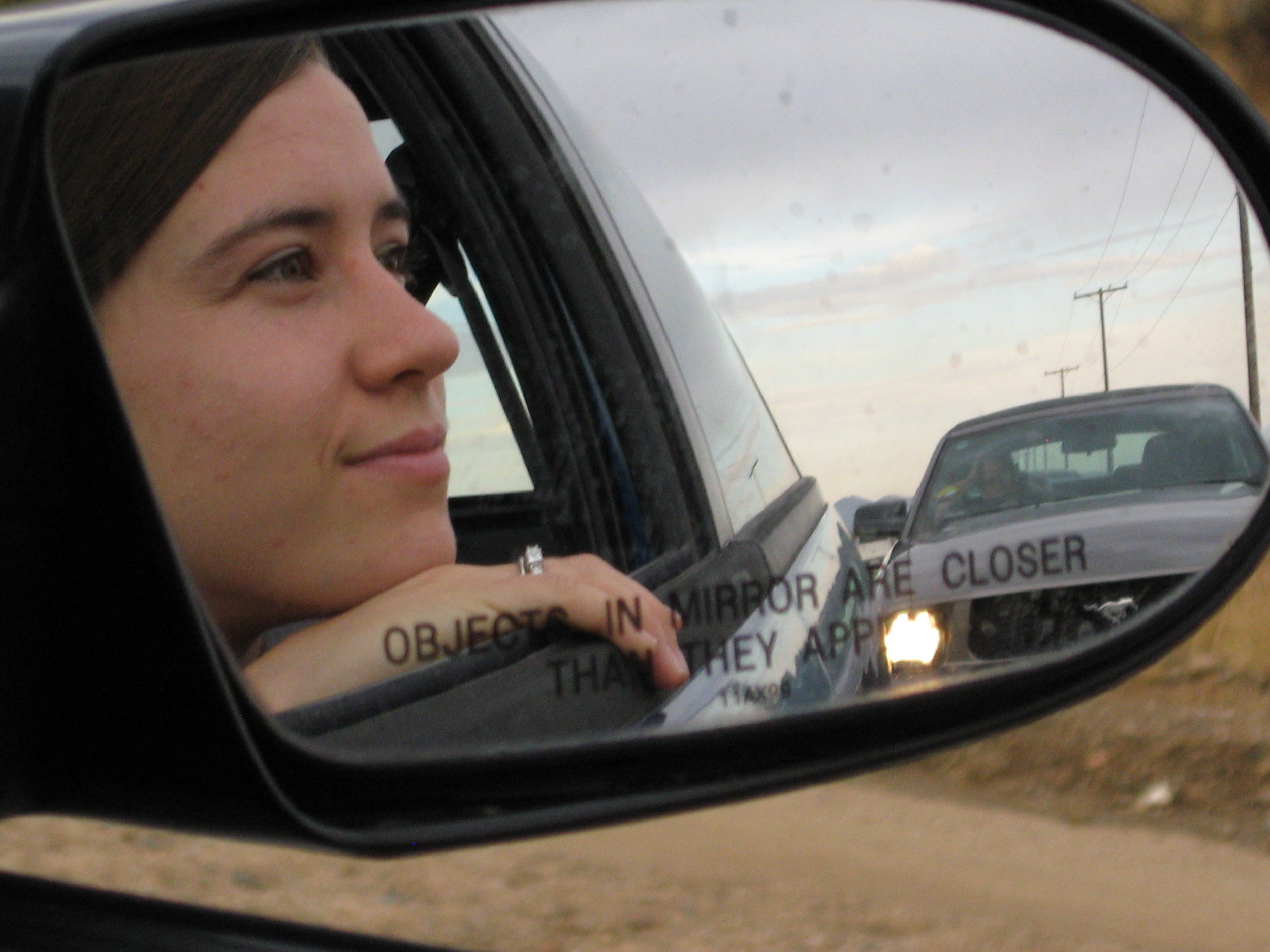Birthed From Struggle
Brad Fruhauff
 5.2 CNF author Heather M. Surls describes how her essay "The Door of Hope" responds to the suffering of real people.
After a day of volunteering at The Door of Hope, a shelter for prostitutes in Tel Aviv, I would crowd onto a bus with dozens of Israelis and ride to our apartment near Jerusalem. Sometimes I’d read on the way; sometimes I’d watch the orange trees, wheat fields and melon fields of the coast rise into the pines, scrub oaks and rocks of the hill country. Once home, I’d shower to scrub away the smells of bleach and sweat and dying. Then my husband and I would sit at the table and I’d begin to talk. Deflated, spent from fighting on the front lines, I’d sketch with words the women I’d met, my tasks and conversations, my small victories in speaking Hebrew.
5.2 CNF author Heather M. Surls describes how her essay "The Door of Hope" responds to the suffering of real people.
After a day of volunteering at The Door of Hope, a shelter for prostitutes in Tel Aviv, I would crowd onto a bus with dozens of Israelis and ride to our apartment near Jerusalem. Sometimes I’d read on the way; sometimes I’d watch the orange trees, wheat fields and melon fields of the coast rise into the pines, scrub oaks and rocks of the hill country. Once home, I’d shower to scrub away the smells of bleach and sweat and dying. Then my husband and I would sit at the table and I’d begin to talk. Deflated, spent from fighting on the front lines, I’d sketch with words the women I’d met, my tasks and conversations, my small victories in speaking Hebrew.
Then I’d write. I used my ugly journal at that time, the plain spiral notebook with the cover that had soaked up something greasy on the bus. I wrote about my experiences to let go of them—catch in words, commit to the page, and release. After several months of this—visiting The Door of Hope on weekends and writing when I came home—I began my essay. I collected the scattered scraps of senseless days and senseless pain and tried to craft something beautiful. The result, after months of experiencing, writing, compiling, and editing, was “The Door of Hope,” a patchwork of stories, faces, and meditations.
The shelter, a concrete basement in the slums of south Tel Aviv, was full of art and artists. Although the walls were moldy, although rats sometimes scampered from one hole to another in full view, although sometimes a prostitute woke screaming from a nightmare, The Door of Hope made people make art. Photographers, especially, came and captured scabbed faces, desperate eyes, grocery bags stuffed with clothes, occasional hugs and smiles. The walls held some of their art: a portrait of a wide-eyed, unsmiling woman in front of a red cloth. She died. One of a skeletal woman with blonde waves of hair, wearing a piece of white silk and lace, leaning against a building. She was beaten to death with a pipe.
Art was a response to pain—that became clear as I worked and wrote. The photographers tried to find beauty in ashes. I tried to reconstruct my experiences so I could cope, so I could handle the hell I saw in back streets and broken bodies. But, perhaps deeper than that, I wrote because I wanted to redeem the pain. I wanted to make something beautiful from withdrawal-complaints and shouts in the alleyway, something poetic yet fragmented to show my lack of understanding—girl after girl, day after day, what can this mean? I wanted to make all this suffering good for something. If these prostitutes had to suffer, I wanted to expose their misery so others would see their need and feel compassion.
Does all art come from pain? I don’t think so, but I do believe that some of the best and most enduring art is birthed from struggle. I think of David and his many poems, which I’ve read for years during dark nights of soul. How wonderful that God took David’s anguish, allowed him to express it, and preserved it for thousands of years to encourage me, riding on the bus to Tel Aviv, bracing myself for the onslaught of evil and fallenness, clinging to bits of truth.
The seas have lifted up, O LORD, the seas have lifted up their voice; the seas have lifted up their pounding waves. Mightier than the thunder of the great waters, mightier than the breakers of the sea— the LORD on high is mighty
(Psalm 93:3-4).
Heather M. Surls is the author of "The Door of Hope," featured in issue 5.2 of Relief.